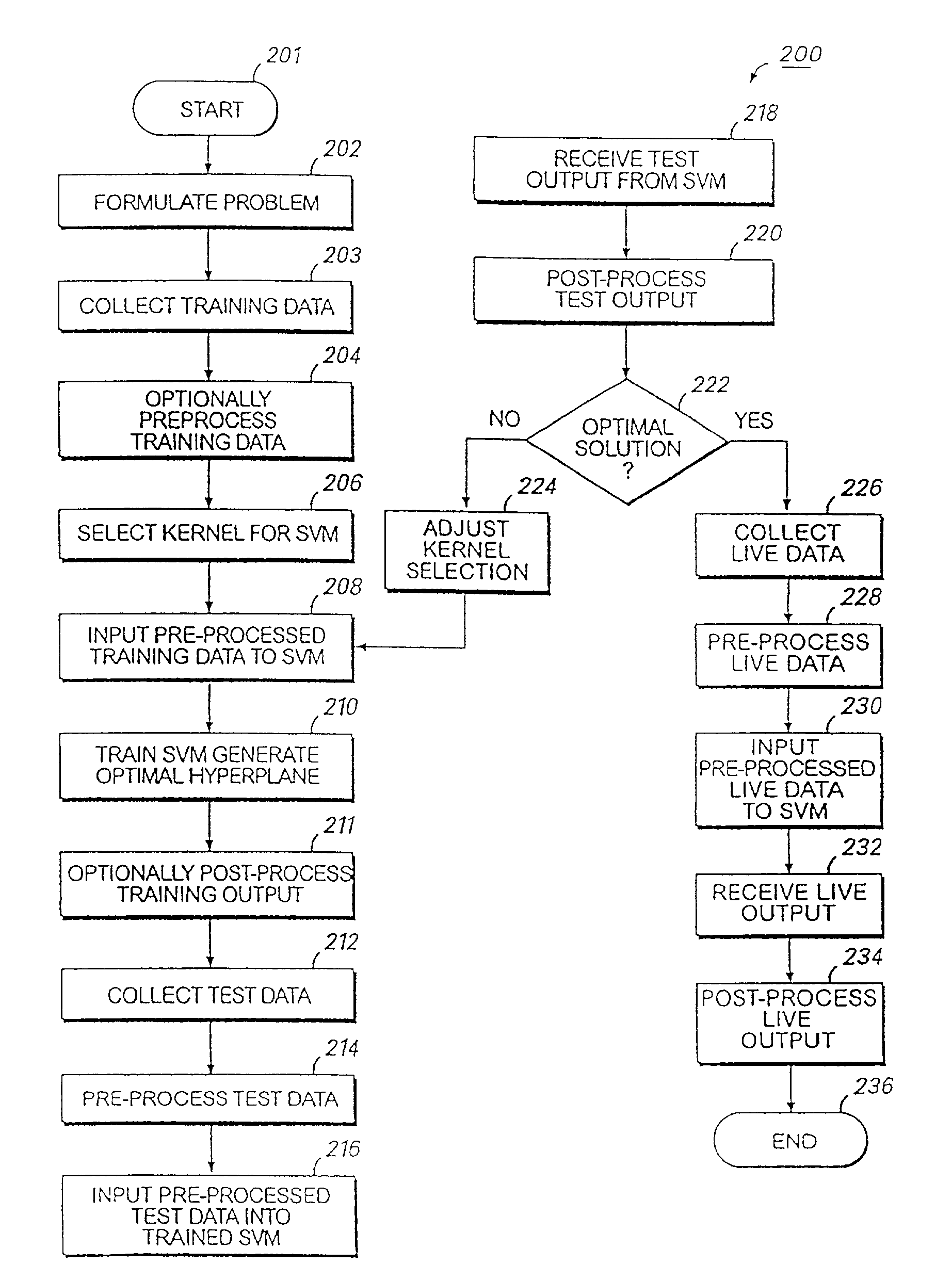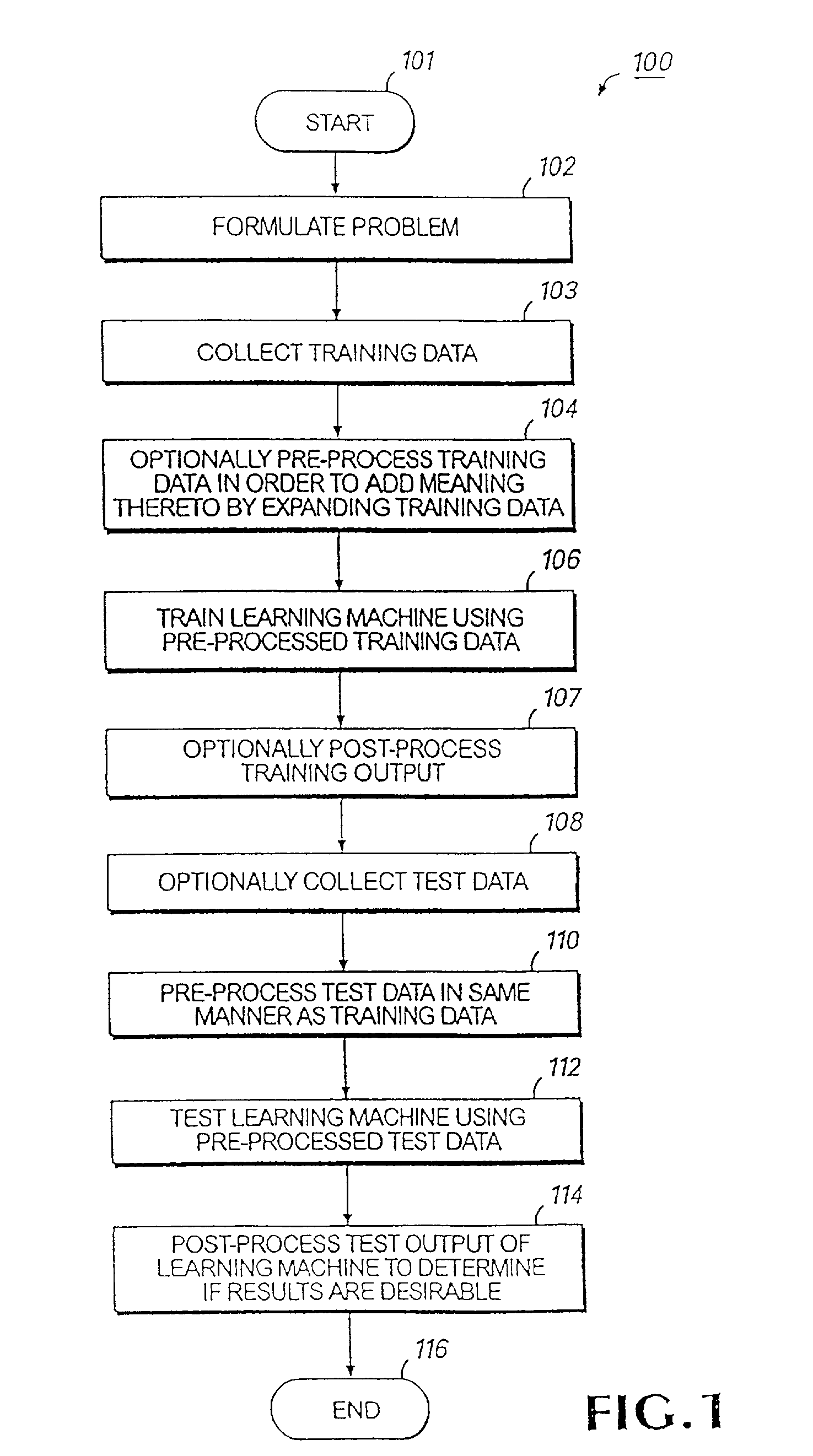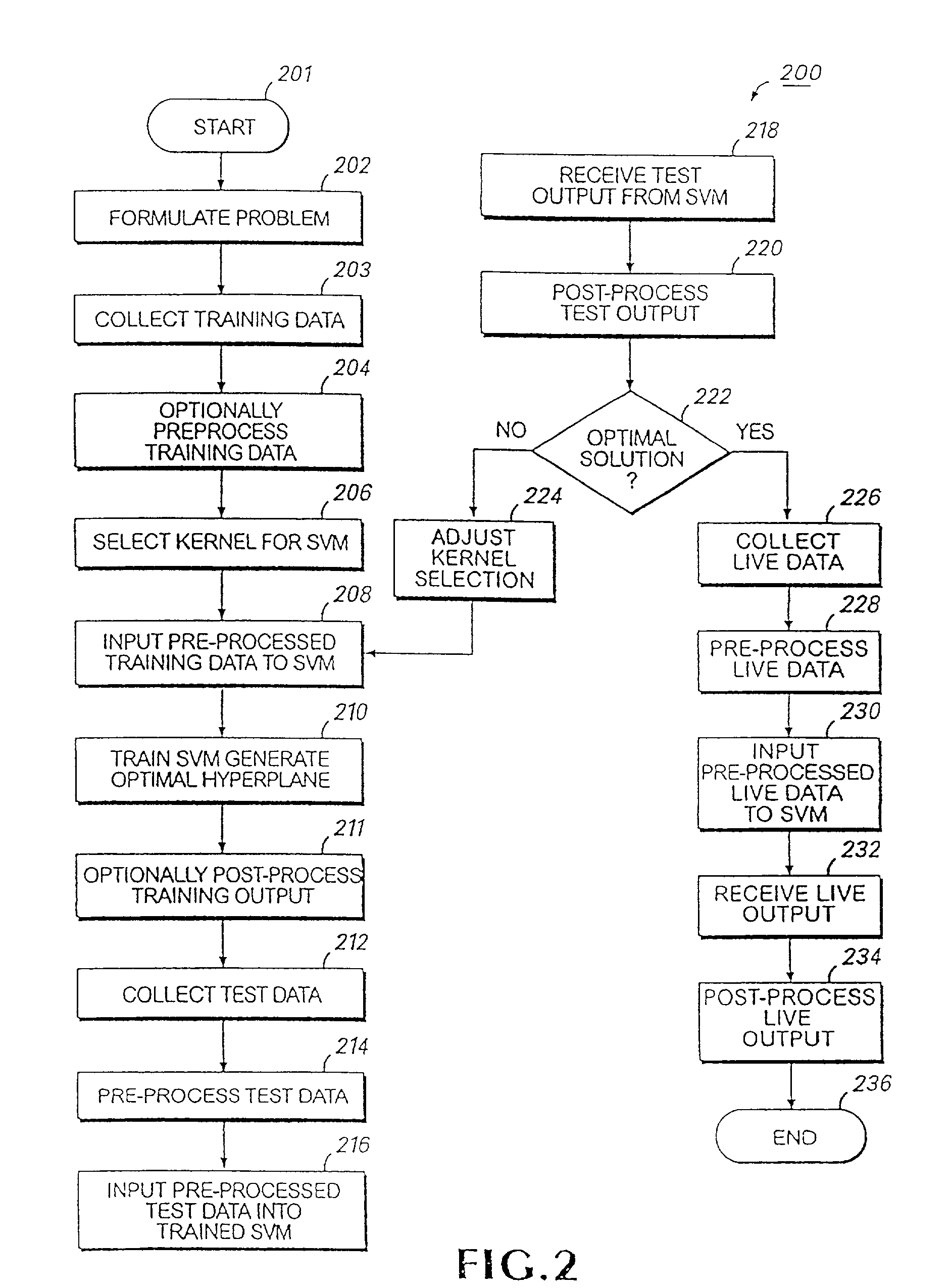Methods of identifying patterns in biological systems and uses thereof
a biological system and pattern technology, applied in the field of learning machines, can solve problems such as more harmful than useful, and achieve the effect of enhancing knowledge discovery and increasing the amount of information for processing
- Summary
- Abstract
- Description
- Claims
- Application Information
AI Technical Summary
Benefits of technology
Problems solved by technology
Method used
Image
Examples
example 1
Analysis of Gene Patterns Related to Colon Cancer
[0187]Analysis of data from diagnostic genetic testing, microarray data of gene expression vectors, was performed with a SVM-RFE. The original data for this example was derived from the data presented in Alon et al., 1999. Gene expression information was extracted from microarray data resulting, after pre-processing, in a table of 62 tissues×2000 genes. The 62 tissues include 22 normal tissues and 40 colon cancer tissues. The matrix contains the expression of the 2000 genes with highest minimal intensity across the 62 tissues. Some of the genes are non-human genes.
[0188]The data proved to be relatively easy to separate. After preprocessing, it was possible to a find a weighted sum of a set of only a few genes that separated without error the entire data set, thus the data set was linearly separable. One problem in the colon cancer data set was that tumor samples and normal samples differed in cell composition. Tumor samples were norma...
example 2
[0268]The data set, which consisted of a matrix of gene expression vectors obtained from DNA microarrays, was obtained from cancer patients with two different types of leukemia. After preprocessing, it was possible to find a weighted sum of a set of only a few genes that separated without error the entire data set, thus the data set was linearly separable. Although the separation of the data was easy, the problems present several features of difficulty, including small sample sizes and data differently distributed between training and test set.
[0269]In Golub, 1999, the authors present methods for analyzing gene expression data obtained from DNA micro-arrays in order to classify types of cancer. The problem with the leukemia data was the distinction between two variants of leukemia (ALL and AML). The data is split into two subsets: A training set, used to select genes and adjust the weights of the classifiers, and an independent test set used to estimate the pe...
example 3
Isolation of Genes Involved With Prostate Cancer
[0309]Using the methods disclosed herein, genes associated with prostate cancer were isolated. Various methods of treating and analyzing the cells, including SVM, were utilized to determine the most reliable method for analysis.
[0310]Tissues were obtained from patients that had cancer and underwent prostatectomy. They were processed according to a standard protocol of Affymetrix and gene expression values from 7129 probes on the Affymetrix Gene Chip were recorded for 67 tissues from 26 patients.
[0311]The samples collected included tissues from the Peripheral Zone (PZ); Central Zone (CZ) and Transition Zone (TZ). Each sample potentially consisted of four different cell types: Stomal cells (from the supporting tissue of the prostate, not participating in its function); Normal organ cells; Benign prostatic hyperplasia cells (BPH); Dysplasia cells (cancer precursor stage) and Cancer cells (of various grades indicating the stage of the canc...
PUM
 Login to View More
Login to View More Abstract
Description
Claims
Application Information
 Login to View More
Login to View More - R&D
- Intellectual Property
- Life Sciences
- Materials
- Tech Scout
- Unparalleled Data Quality
- Higher Quality Content
- 60% Fewer Hallucinations
Browse by: Latest US Patents, China's latest patents, Technical Efficacy Thesaurus, Application Domain, Technology Topic, Popular Technical Reports.
© 2025 PatSnap. All rights reserved.Legal|Privacy policy|Modern Slavery Act Transparency Statement|Sitemap|About US| Contact US: help@patsnap.com



